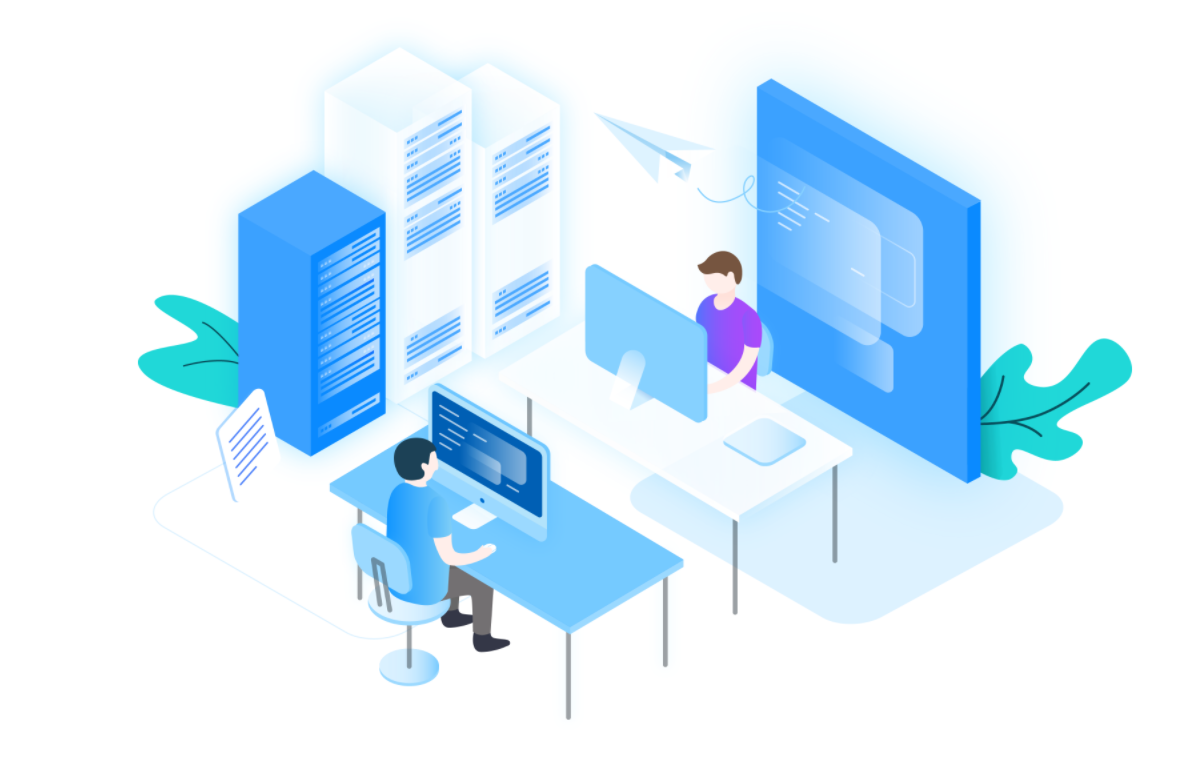In less than 2 months our Digital Factory team managed to implement a completely new service at its client with a social purpose: helping citizens from our region who have been impacted by the Covid-19 to pay their rent via a one-off premium.
2 months seems very long to implement a new service, but in this case, it was a real performance!
But first of all, what is the digital factory?
The Digital Factory is a team of developers (Front-end/Back-end), designers (UX/UI/Service) and testers that are in charge of addressing incremental innovation. This team is responsible for scaling up a complex digital platform at its client. For the non-geeks: let’s imagine that the initial solution your client has implemented was a simple muffin. The role of the factory will be to transform that muffin first into a nicer chocolate muffin with chocolate chips, then into a big cake, with more features, etc. The idea is to add functionality incrementally through continuous improvements and releases. Read more about our Digital Delivery Model with the Digital Studio and Digital Factory.
Now, what was exactly that solution?
Due to the COVID-19 crisis, a lot of people had to reduce their professional activity, became temporarily unemployed or lost their job due to the impact on their employer’s economic activity. In order to help these roughly 80,000 targeted people in our region to pay their rent, our client offered a possibility to request a premium for each household on its website.
The first idea about this request was disclosed towards the Factory team at the beginning of May 2020 without any clear requirement but stating that it should be implemented before the end of June 2020.
- The citizens were first identified in a ‘targeting phase’ by the client as ‘potentially eligible’ based on available data. Once identified, these people received a postal letter informing them to go on the website to confirm their premium request.
- On the website, they had to fill in a form and provide relevant data of their financial/professional/housing situation proving their eligibility for the premium.
- The request was then sent to the client who could either approve or decline them.
- If approved, citizens from our region could benefit from that premium and receive the aid directly on their bank account.
In order to successfully deliver the project, the Digital Factory team needed to overcome a couple of hurdles: time constraints, technical constraints and remote interactions.
Time constraint:
We had a tight planning, knowing that the law voted by the government stated that the citizens should be able to request their premium via the website by July 1st at the latest. This short planning led us to speed up the processes and maximize the efficiency of each phase:
- A design sprint was organized the first 3 days after the project launch aiming to clarify the flow for the end-users and draft the form. This ended with a clear design laying out the end to end flow, from the login on the platform to the moment the premium is granted to the requester.
- This initial phase opened the floor for discussions with business and the technical team having the hand on the back-end systems. This, in order to make sure that the drafted screens are realistically and technically feasible.
- Then, once the requirements slowly clarified, we could start with developments, starting from generic ones to more specific ones day after day, as the requirements became more clear and refined.
- While the development took place, we had a lot of reviews with business in order to make sure that the implementation was still adequate, not only from a business point of view but also from an end-user point of view. Moreover, through the whole process, we constantly aligned with the team that controlled the back-end system at the client to make sure that the logic in the back-end was matching with the developments in the front-end for the screens that would be visible for the user.
- Finally, the testing took place and lasted around a week: As the planning was really short, we implemented the biggest functionalities but some details still needed to be fixed while the tests were ongoing.
Technical Constraints:
The main technical constraint we faced was the expected increase in volume on the platform; as originally the platform was sized for lower volumes of traffic given the nature of the interactions, we now needed to upgrade some of the technology components to allow for a multitude of users requesting the premium at the same time (around 80.000 people):
- The technology behind the form: we had to implement a completely new type of form for this specific request to support the increased traffic on the platform; React forms supported by SAP Commerce Cloud.
- The architecture behind the handling of the documents also needed to be completely reviewed as this request required the users to attach multiple documents. We therefore opted for a new way to store documents via the Google Cloud Platform to mitigate overload & performance issues.
Remote interactions:
Due to the quarantine imposed by the COVID-19 crisis, we had to manage all of our project activities virtually: from the kick-off meeting, through delivery and testing. Working with developers remotely is not a new thing for our team and delivery model. However, having all your interactions constantly taking place via Microsoft Teams was something new. Moreover, this project involved people from every department at the client side: Legal department, Data department, Client Services, Architecture, Business, Financial,… On top of that, you add our Deloitte team and some people from the back-end side, we had to handle meetings with more than 25 people sharing their input & concerns on this premium.
- The service design sprint for instance, which usually takes place physically in a 3-5 days workshop with the client took place completely remotely, forcing our team to master new virtual collaborative tools like Mural and Miro.
- The testing, which is sometimes already hard to manage at the client-side, also took place virtually via Teams, with people sharing their screens when an issue arose, all seamlessly managed in Jira and Confluence.
This definitely challenged us in a way it never happened before. However, it also forced us to organize and structure the work even more efficiently than usual as people are on their own, they can’t just raise their hand and come to you if something goes wrong.
I want to conclude the story of this exciting purpose-driven journey with some key takeaways:
- Collaboration is key (within the team, with the client, with third parties, with testers,..)
- Availability and transparent communication are key (if something is not clear, if you don’t know, say it. If you want something specific, also state it).
- Make sure there is a great dynamic and team spirit: in the end, all of this is possible thanks to the people within your team. Without a great cohesion and dedication, it is hard to get your team going the extra mile and make what is needed in order to get it done.
- Prioritize your work: You never know how things can evolve so it’s critical that you organize your work, making sure that what you focus on will not change, and leave the uncertainty for later if you believe it might change. I heard many times the famous rule of 80-20. This project really showed me the importance of prioritizing your tasks, focusing on the skeleton before digging into the details. However, don’t underestimate the ‘details’ either. If you don’t pay attention, what you believe is a detail could actually force you to rework your whole solution.
And finally, but most importantly, it’s truly an honor to give something back to society by supporting the fight against Covid-19, albeit by something small, but an elephant like Covid-19 needs to be eaten in small pieces.
If you liked reading our accomplishments in the Digital Factory, perhaps its time to check what is the Digital Studio and why that in 5 years, every business will have a Digital Studio

![shutterstock_1669763125_lo[225]](https://digitaldelight.be/wp-content/uploads/2020/09/shutterstock_1669763125_lo225.png)


